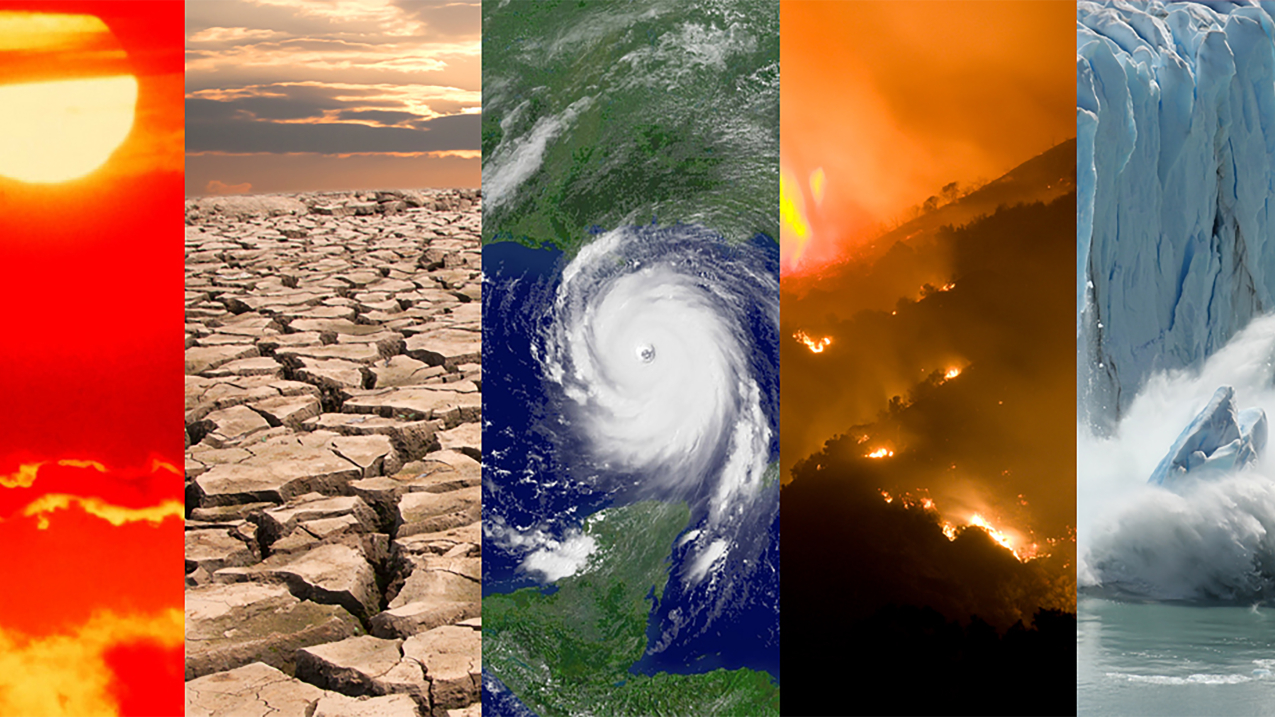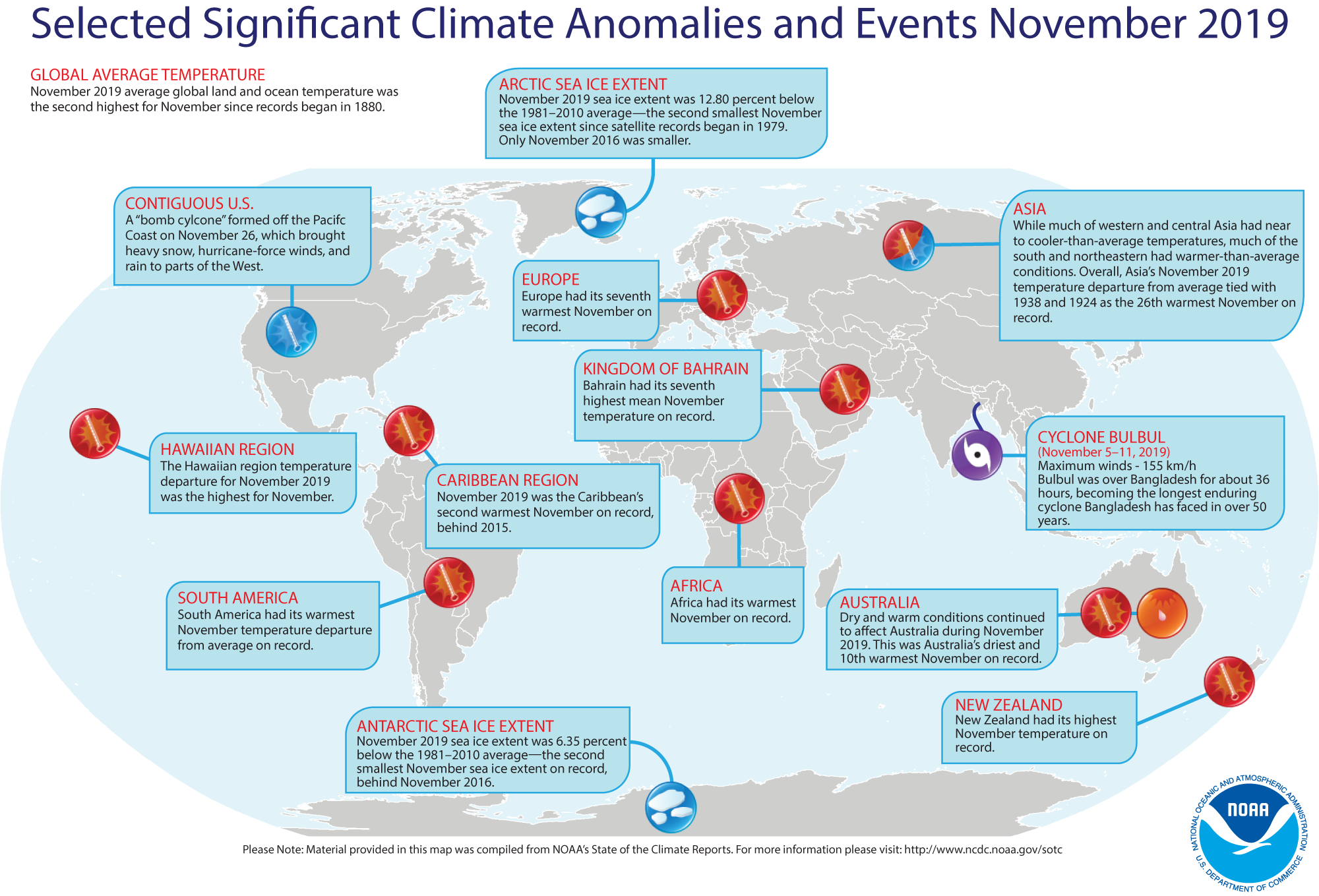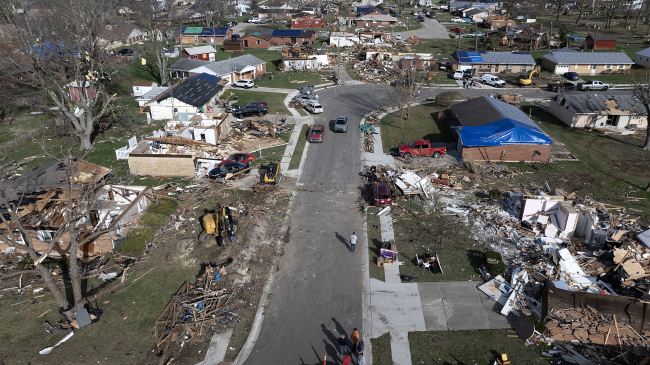Polar sea ice coverage shrank to near-record lows
Mother Earth seems to be on repeat with another month of heat: November 2019 was the second-hottest November in the 140-year global climate record.

A collage of typical climate and weather-related events: heatwaves, drought, hurricanes, wildfires and changes in sea ice coverage. (Image credit: NOAA)
Moreover, both the season (September through November) and the year to date (January through November) were each the second hottest in recorded history, according to scientists at NOAA’s National Centers for Environmental Information.
The exceptional heat also was felt at both ends of the world: Sea ice coverage across the Arctic and Antarctic oceans fell to near-record lows in November.
Here’s more from NOAA’s latest monthly global climate report:
Climate by the numbers
November 2019
The average global land and ocean surface temperature for November 2019 was 1.66 degrees F (0.92 of a degree C) above the 20th-century average and the second-highest November temperature on record, just shy of November of 2015.
In fact, the world’s five hottest Novembers have all occurred since 2013.
The average global sea surface temperature in November was 1.39 degrees F (0.77 of a degree C) above average — the second-highest temperature for November on record, behind November 2015.
Year to date and seasonal statistics
The year-to-date global land and ocean surface temperature was 1.69 degrees F (0.94 of a degree C) above the 20th-century average, which made it the second-warmest period of January through November in the 140-year record — just behind the same period in 2016.
The season (autumn or spring, depending on the hemisphere) saw an average global land and ocean temperature 1.69 degrees F (0.94 of a degree C) above the 20th-century average of 57.1 degrees F (14 degrees C). It was the second-hottest September-through-November period on record behind 2015.

More notable climate events from this report
-
Sea-ice coverage shrank to its second-lowest size on record for November in both the Arctic and Antarctic behind that observed in November 2016. Arctic sea ice coverage was 12.8 percent below the 1981–2010 average, while the Antarctic coverage was 6.35 percent below average.
-
Continents and island regions sweated it out: It was the hottest November on record for South America, Africa and the Hawaiian Islands. The Caribbean had its second-hottest November, and Europe had its seventh-hottest on record.
-
Warming of the ocean continued: The world’s average sea surface temperature ranked second warmest for the year to date — just 0.05 of a degree F (0.03 of a degree C) cooler than the record-breaking year of 2016.
More > Access NOAA’s latest climate report and download the images.
Media contact
John Bateman, (301) 713-9604



